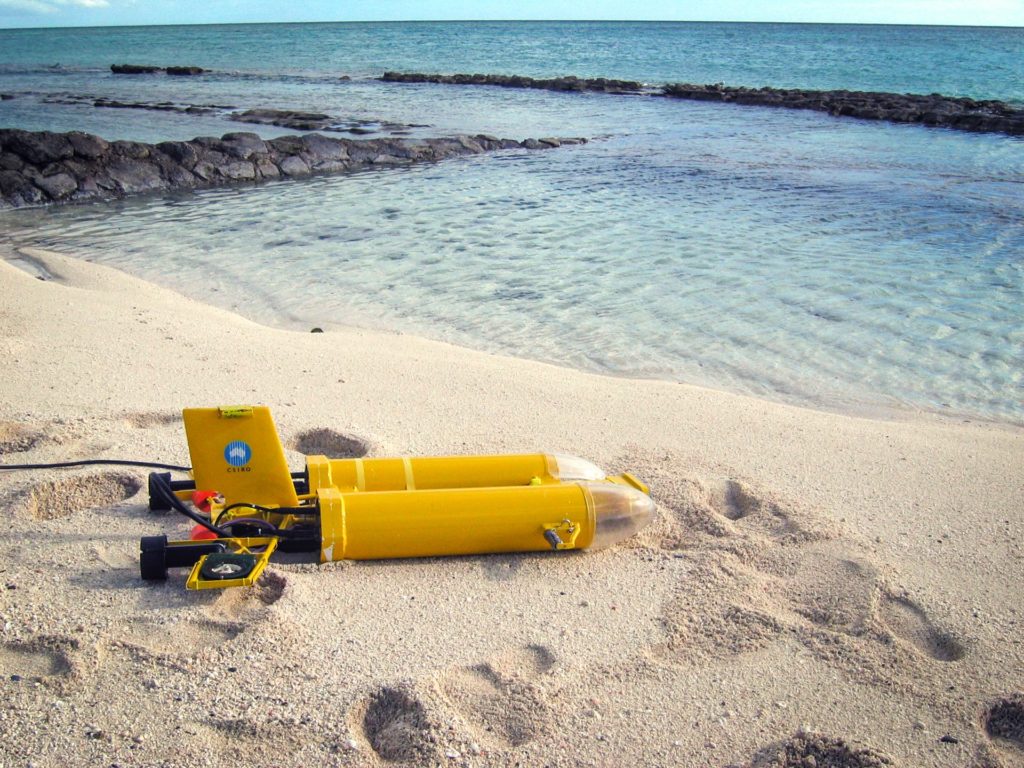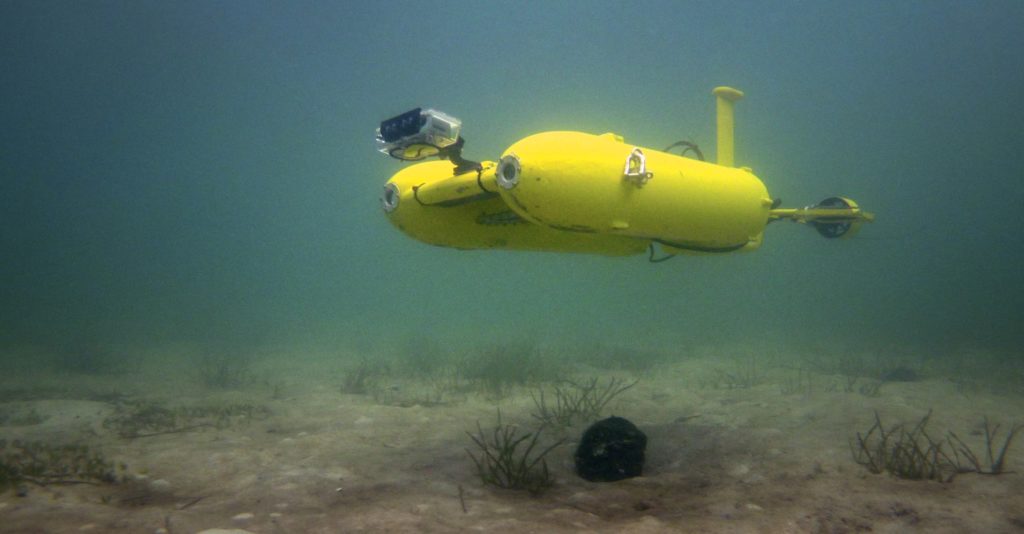Starbug underwater vehicle: collecting data from the sea
Starbug is an inexpensive, miniature autonomous underwater vehicle ideal for data collection and ecosystem surveys.
|The challenge
Satellites need to be regularly calibrated
Earth observation satellites need to be regularly calibrated to ensure the accuracy of their observations. This is done using a process called vicarious calibration, which involves ground crews walking in grids or transects and taking measurements with hand held devices called spectrometers.
This happens at the same time the satellite is travelling overhead, and the two sets of data are compared to ensure the accuracy of the satellite.
This often needs to be done at remote locations such as Lake Lefroy, a salt lake in Western Australia, due to its bright and uniform surface. Unfortunately it’s a long way from any urban centres, making it a time consuming and difficult proposition to conduct regular calibrations.
|Our response
We created Starbug, an autonomous underwater vehicle

Starbug, our autonomous underwater vehicle
We created Starbug, an inexpensive, miniature autonomous underwater vehicle (AUV) ideal for data collection and ecosystem surveys.
Starbug is small enough to be launched by one person without the need for specialised equipment, such as cranes, and it operates with minimal to no human intervention.
Its twin torpedo-style body represents a radical new design philosophy in comparison with other AUVs, which tend to be either a square or single hull torpedo shape. It’s also one of the first AUVs in the world where vision is the primary means of navigation and control.
With modern vision systems being relatively low cost, not only can Starbug use vision to navigate complicated terrain such as a coral reef, it can also use the same sensors to capture images.
Because GPS signals are not available underwater, we’ve also developed a localisation system based on underwater sensor networks. Our underwater sensor nodes use acoustic modems to transmit data between themselves, and when equipped with one of these modems, Starbug is able to communicate with the sensor nodes and determine how far away they are, and integrate these distance measurements to determine its position.
|The results
Smart and affordable automated underwater sensing
The effectiveness of AUVs for open water monitoring and mapping is increasingly recognised by many oceanographic institutions around the world. Using the right mix of sensors, smart navigation, design, guidance and information processing techniques, next generation AUVs will prove highly valuable to marine services markets.
We’re using Starbug to monitor the quality of water in Lake Wivenhoe in Queensland, catalogue the sea floor ecosystems, and monitor the health of the Derwent and Huon estuaries and the D’Entrecasteaux channel in Tasmania.

Starbug, roaming through the ocean
